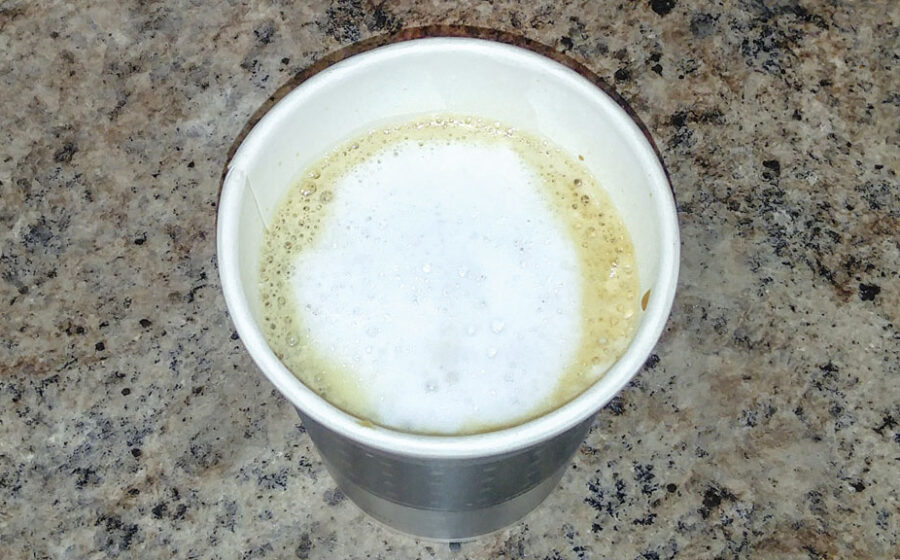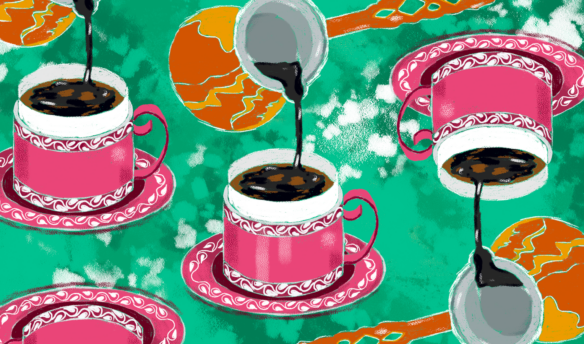[S]ome twenty-four months ago, I made a trip thirty minutes south to Charlotte to drink a coffee at a café not my own, something I always wish I did more. Not Just Coffee is a Counter Culture account, as we had been for fifteen years running, and so I knew I could expect a good cup. The Hologram espresso that the NJC barista served me wasn’t good, though. It was great. It was the same roast from the same roaster we were using on espresso at the time, and it was far superior to what I had become accustomed to drinking in my own café.
Our flagship store, in Davidson, North Carolina, just up Interstate 77 from Charlotte, has been open seven days a week since the fall of 1998. For the better part of the past decade, lines out Summit Coffee’s door have been a common sight. We brew and sell more than 400 pounds of coffee a week in a town of 11,000 people. All this is to say, business has been flourishing for a long time. From a revenue standpoint, Q4 of 2013 had been the best three-month stretch in the company’s history, just topping Q3 of that same year.
But, as the author Jim Collins writes, “good is the enemy of great.” And that, I realized that morning in 2014, was our greatest challenge at Summit Coffee. I was sipping an espresso that was sweet but not sour; with fruit but not ferment; robust but not over-extracted. I was, for the first time in quite some time, sipping a well-extracted espresso.
Be remarkable. That was a prompt we gave ourselves and our staff. Be remarkable in the most literal sense of the word: do things that people need to remark upon.
Specialty coffee looked wildly different when we opened our business in the nineties. For better or worse, and mostly better, we thrived because of Starbucks, not in spite of. Venti replaced large for most coffee drinkers, and most espresso drinks were, essentially, milk drinks. Our customers’ coffee addictions meant sizes needed to be bigger. A twelve-ounce coffee? Why bother. They needed twenty ounces of piping hot dark roast, and then twenty ounces more on their way out the door. And to a café owner, that meant happy customers and happy balance sheets.
So when, without warning, 1998 turns into 2014 and lines are still out the door, it’s shocking to look up and learn that steaming milk to 170 degrees is no longer the norm. To learn that batch brewing into the last batch brew, which was on top of yet another batch brew, isn’t the optimal way to present drip coffee. To learn that a twenty-ounce cappuccino isn’t really a thing. To learn that seven pumps of sugar-free hazelnut syrup doesn’t do the coffee any favors. Or to learn you should have known all this a long time ago.
When being good means profits and content customers and a sterling Main Street reputation, isn’t that good enough? If the customer wants a venti vanilla cappuccino with skim milk, extra hot of course, shouldn’t we make it for them? Aren’t we in the business of providing customers with what they want to drink? To all of these questions: yes, and no.

Coffee is so personal, and I love that. If you like your coffee black with tons of brightness and enough fruit in the aroma to punch you in the face, yes. If you like your coffee darker than dark, with half-and-half and three teaspoons of raw sugar, yes. If you drink your coffee because it’s your passion, yes. If you drink your coffee because you’re sitting in traffic on the way to the office, yes. If you prefer to experience your coffee alone, yes. If you prefer to drink in the company of friends, yes.
There is a fine line, however, between being accommodating and being driven by accommodation. Between being great and being good. And we were in the rut of just being. At the end of the day, it became challenging for us to find meaning in our daily work, in our life’s work, if it also meant settling.
In the Spring of 2014, we had a staff of thirty-six employees and an average daily customer base of 500 people. And every day our drinks were prepared and served at a quality level that we knew was inferior to other cafés. Most of our staff didn’t think this was true, and certainly most of our customers didn’t have any problems with what Summit Coffee was producing. But I and my partners did. We had to change.
Be remarkable. That was a prompt we gave ourselves and our staff. Be remarkable in the most literal sense of the word: do things that people need to remark upon. We shouldered this challenge because if operating our business means settling for not being as great as we could be, that’s not a business we are interested in. In my previous career as a journalist, a common refrain to my questions was, “Because that’s how we’ve always done it.” Made my skin crawl then, but really made my skin crawl when I realized that’s how we were quietly operating our own business.
And thus begins the two-year makeover of Summit Coffee, where everything came into question: recipes, sizes, mechanics, equipment, training, presentation—everything. Convincing ourselves that evolving would be better for everyone was the easiest part. Convincing our staff and our customers, and putting forth the money and resources to make it happen, now that’s when the fun starts.
—Brian Helfrich is the co-owner of Summit Coffee Company in Davidson, North Carolina.















